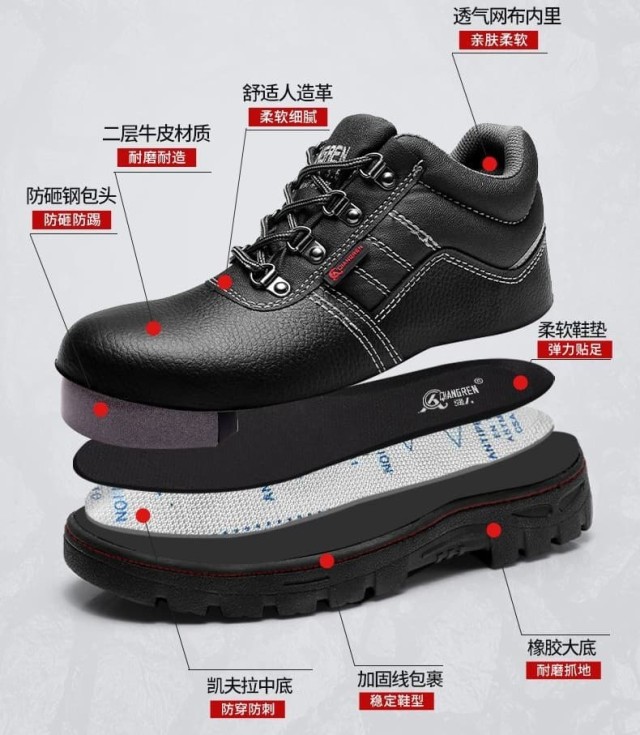Finding the right work footwear isn't just about comfort—it’s about preventing injuries, complying with regulations, and staying productive through long shifts. Whether you’re navigating construction sites, healthcare corridors, or outdoor terrain, the wrong shoes can lead to fatigue, slips, or even catastrophic accidents. Here’s how to match your footwear to your job’s unique risks.
Choosing the Right Work Footwear
Pull-On Boots: Speed and Durability in High-Pressure Environments
Ideal for: Emergency responders, warehouse staff, and food processing workers.
Pull-on boots prioritize quick wearability and all-day resilience. Unlike lace-ups, they use stretchable materials (like elastic side panels) to reduce time spent adjusting straps while maintaining a secure fit. Research shows they’re particularly effective in healthcare, where nurses report 20–30% less foot fatigue during 12-hour shifts compared to traditional lace-ups, thanks to their balanced arch support and lightweight design.
Key considerations:
- Opt for slip-resistant soles if floors are often wet (e.g., hospitals or kitchens).
- Verify electrical hazard protection (ASTM F2413 compliance) for roles near live wires.
Lace-Ups vs. Hiking Boots: When Ankle Support Meets Terrain Challenges
Ideal for: Forestry workers, utility technicians, and uneven terrain.
Lace-ups provide customizable ankle stability through adjustable tension, while hiking-style boots add rugged traction for muddy or rocky landscapes. For outdoor roles, prioritize:
- Deep treads (≥4 mm) to prevent slips on loose terrain.
- Waterproof membranes (e.g., Gore-Tex) for all-weather durability.
Did you know? OSHA violations in construction often cite inadequate puncture resistance—a risk mitigated by boots with thick midsoles and metatarsal guards.
Lightweight Alternatives: Balancing Comfort and Risk in Casual Settings
Ideal for: Retail, light manufacturing, or indoor maintenance.
For jobs with minimal physical hazards, breathable sneakers with reinforced toes can replace bulky boots. Look for:
- Static-dissipative soles to prevent electrostatic discharge in electronics labs.
- Cushioned insoles to reduce fatigue from standing (e.g., teachers or cashiers).
Industry-Specific Recommendations
Construction and Heavy Labor: Compliance and Protection Priorities
Steel-toe boots meeting ASTM F2413 standards are non-negotiable here. They defend against:
- Impact hazards (e.g., falling tools).
- Puncture risks (exposed nails or rebar).
Pro tip: Pair with metatarsal guards if heavy machinery is present.
Outdoor and All-Weather Roles: Traction and Waterproofing Essentials
For agricultural or utility workers:
- Insulated linings (-20°F to 50°F tolerance).
- Vibram soles for grip on icy or wet surfaces.
Healthcare and Light-Duty Jobs: Slip Resistance and Fatigue Reduction
Hospitals prioritize:
- Oil-resistant soles to combat sanitizer-slick floors.
- Slip-on designs for rapid movement between patient rooms.
Step Into Safety with 3515
Every job demands footwear tailored to its risks—whether it’s electrical hazards, ankle twists, or slick surfaces. 3515 equips distributors and bulk buyers with rigorously tested boots and shoes that blend OSHA compliance with all-day comfort. Ready to outfit your team with footwear that protects and performs? Contact 3515 to explore our industry-specific solutions today.
Products You Might Be Looking For:
View steel toe work boots for heavy-duty protection
Explore customizable safety footwear for workplace safety
Related Products
- Wholesale Waterproof Tactical Boots Custom Suede & High-Traction Soles
- Customizable Anti-Smash Safety Boots for Wholesale & Private Label Manufacturing
- Wholesale Mesh Steel Toe Safety Shoes with Dial Closure Factory Production
- Athletic Safety Shoes with Dial Closure & Steel Toe for Wholesale & Custom Manufacturing
- Wholesale Customizable Suede Safety Boots - Puncture-Proof with Velcro Closure
Related Articles
- How Tactical Boots Solve Everyday Challenges: From City Streets to Job Sites
- How to Choose Tactical Boots That Match Your Law Enforcement Needs
- How Tactical Boots Achieve All-Day Comfort: Science-Backed Design Secrets
- How Tactical Boots Are Engineered to Last: The Science Behind Long-Lasting Performance
- How Tactical Boots Solve Real-World Challenges: From Work Sites to Wilderness



















